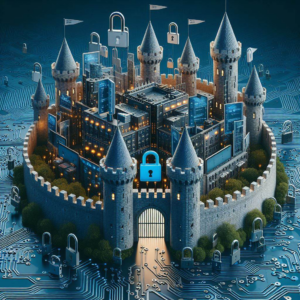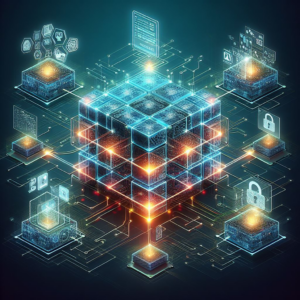Flipper Zero: Empowering Hardware Enthusiasts with Versatile Security Solutions
Flipper Zero emerges as a pioneering multifunctional device, revolutionizing the realm of hardware hacking and security testing. Catering to the needs of hardware enthusiasts, security researchers, and pentesters, this open-source gadget serves as a Swiss Army knife of innovation and exploration.
At its core, Flipper Zero excels in RFID and NFC emulation and hacking capabilities, allowing users to emulate a myriad of cards and intercept signals seamlessly. Additionally, its prowess extends to infrared control, enabling users to manipulate various appliances through learned and replayed signals.
However, Flipper Zero is not merely limited to these functionalities. Armed with an array of hardware hacking tools, including GPIO pins, SPI, I2C, and UART interfaces, it facilitates extensive hardware debugging. Moreover, its compatibility with diverse radio protocols such as Bluetooth, Wi-Fi, and Zigbee broadens its scope of application.
What truly sets Flipper Zero apart is its Tamagotchi-like interface, which evolves and grows in capabilities as users engage with it, injecting an element of gamified learning into the process. Furthermore, its expandability through custom firmware and applications underscores its adaptability to specific user requirements.
Fueling its development is a vibrant and inclusive community, actively contributing to its growth and fostering collaboration. This community-driven approach ensures continuous improvement and innovation, enriching the Flipper Zero experience for all users.
From penetration testing to research and development endeavors, Flipper Zero serves as a catalyst for exploration and creativity. However, it’s imperative for users to exercise responsibility, adhering to legal frameworks governing hacking and security testing. Additionally, while Flipper Zero offers a user-friendly interface, proficiency in programming and hardware hacking concepts may be advantageous for certain functionalities.
In conclusion, Flipper Zero stands as a beacon of empowerment for hardware enthusiasts, offering a versatile toolkit for security solutions and creative problem-solving. With its open-source ethos and supportive community, it paves the way for endless possibilities in the ever-evolving landscape of hardware hacking and pentesting. For the latest updates and developments, exploring the Flipper Zero website and communities is recommended.

 In today’s interconnected world, cybersecurity has become an essential shield against a constantly evolving threat landscape. Businesses and individuals alike require robust defenses to protect their data and infrastructure. Fortunately, the rise of online course cybersecurity has opened a gateway to accessible and effective education, empowering individuals and organizations to build their cybersecurity expertise.
In today’s interconnected world, cybersecurity has become an essential shield against a constantly evolving threat landscape. Businesses and individuals alike require robust defenses to protect their data and infrastructure. Fortunately, the rise of online course cybersecurity has opened a gateway to accessible and effective education, empowering individuals and organizations to build their cybersecurity expertise. In the labyrinthine world of online information, Open Source Intelligence (OSINT) emerges as a potent tool for discerning truth and unearthing hidden patterns. By harnessing publicly available data, coupled with the power of software, individuals, businesses, and even governments can unlock actionable insights, forge connections invisible to the naked eye, and empower informed decision-making. Let’s embark on a journey through the multifaceted landscape of OSINT, exploring its methodologies, the game-changing role of software, and ethical considerations for responsible practice.
In the labyrinthine world of online information, Open Source Intelligence (OSINT) emerges as a potent tool for discerning truth and unearthing hidden patterns. By harnessing publicly available data, coupled with the power of software, individuals, businesses, and even governments can unlock actionable insights, forge connections invisible to the naked eye, and empower informed decision-making. Let’s embark on a journey through the multifaceted landscape of OSINT, exploring its methodologies, the game-changing role of software, and ethical considerations for responsible practice. The Dark Web, shrouded in mystery and misconception, represents a hidden portion of the internet accessible through special tools. While it harbors both legal and illegal content, approaching it cautiously and responsibly is crucial. This guide delves into the technical aspects of navigating the Dark Web safely, emphasizing the use of the Tor Browser and providing best practices for secure exploration.
The Dark Web, shrouded in mystery and misconception, represents a hidden portion of the internet accessible through special tools. While it harbors both legal and illegal content, approaching it cautiously and responsibly is crucial. This guide delves into the technical aspects of navigating the Dark Web safely, emphasizing the use of the Tor Browser and providing best practices for secure exploration. Embarking on the quest for unbeatable password security demands more than just technical jargon – it requires a comprehensive and evolving strategy. In this guide, we go beyond the basics to provide you with a holistic approach to fortify your digital identity against the ever-evolving tide of cyber threats. Join us on this transformative journey that amalgamates innovation with usability, creating a robust and user-friendly defense.
Embarking on the quest for unbeatable password security demands more than just technical jargon – it requires a comprehensive and evolving strategy. In this guide, we go beyond the basics to provide you with a holistic approach to fortify your digital identity against the ever-evolving tide of cyber threats. Join us on this transformative journey that amalgamates innovation with usability, creating a robust and user-friendly defense. Blockchain technology has taken the world by storm, promising transparency, decentralization, and a revolution across various industries. However, with great power comes great responsibility, and blockchain introduces its own set of cybersecurity challenges. This article delves into the heart of blockchain, its technical intricacies, and the burning questions surrounding its vulnerabilities.
Blockchain technology has taken the world by storm, promising transparency, decentralization, and a revolution across various industries. However, with great power comes great responsibility, and blockchain introduces its own set of cybersecurity challenges. This article delves into the heart of blockchain, its technical intricacies, and the burning questions surrounding its vulnerabilities.